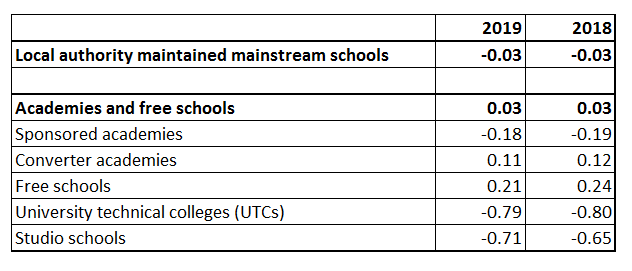The government has released provisional key stage 4 data this morning that reveals how schools have fared in headline accountability measures.
The data includes figures on progress and attainment 8 measures, and also provides an update on EBacc figures.
Please note that due to the variations in data for private school caused by iGCSEs, which do not count towards league tables, we are focusing on state-funded schools only.
We are also unable to report on comparisons between selective and non-selective schools, or between different types of faith school, because the government has published less detailed analysis this year.
Here are the key findings.
1. EBacc entries also up (but languages hardly improving)
The proportion of pupils entering the full slate of EBacc subjects at GCSE rose by 1.6 percentage points this year to 40 per cent.
In humanities, entries rose 2.3 percentage points to 80.6 per cent, while science was up 0.2 percentage points to 95.6 per cent.
However entries in languages – one of the main stumbling blocks to the government having any chance of reaching its national entry targets – rose by just 0.5 percentage points to 46.6 per cent.
Entry rates in English and maths remained unchanged at 95.8 per cent and 97.3 per cent respectively.
2. Free schools’ P8 falls slightly, but they still come out on top
Free schools remain the best-performing type of school in terms of their progress 8 scores (by far!), but their average score has dropped slightly since last year.
In 2019, the average progress 8 score for free schools was 0.21, down from 0.24 last year. However, the Education Policy Institute has today warned that pupil characteristics in free schools account for some of the high progress scores.
The next best-performing group was converter academies, with an average score of 0.11, though this fell from 0.12 last year.

The average score of local authority-maintained schools remained stable at -0.03, while the performance of sponsored academies improved slightly from -0.19 last year to -0.18 in 2019.
UTCs received an average score of 0.79, a slight improvement on last year’s score of 0.80, while studio schools actually got worse, with scores falling from -0.65 to -0.71.
Interestingly, they have changed the way they report these statistics this year so the full data by school type is NOT included in the government’s summary document.
3. Rise in attainment 8 scores tails off
The average attainment 8 score among state-funded schools nationally rose from 46.4 last year to 46.5 this year, a smaller rise than the 0.4 point rise seen between 2017 and 2018.
Average scores in the English, maths and EBacc elements of attainment 8 remained stable at 9.9, 9.0 and 13.4 respectively this year, while the score in the “open” element fell from 14.2 to 14.1.
4. Girls are still doing better than boys
Girls continue to outperform boys in almost every metric. Their EBacc entry rate was 45.9 per cent, compared with 34.3 per cent among boys, and they had an average point score of 4.31, much higher than the 3.83 average scored by boys.
The average attainment 8 score among girls was 49.3, compared with 43.9 among boys.








I’m no fan of the UTC/studio school system but using Progress 8 to judge them is unfair. They have no control over education quality in Key Stage 3 because they don’t take pupils until Key Stage 4. They also offer a different curriculum to other schools which means they are more likely not to enter pupils for the number and type of exams which count in Progress 8.